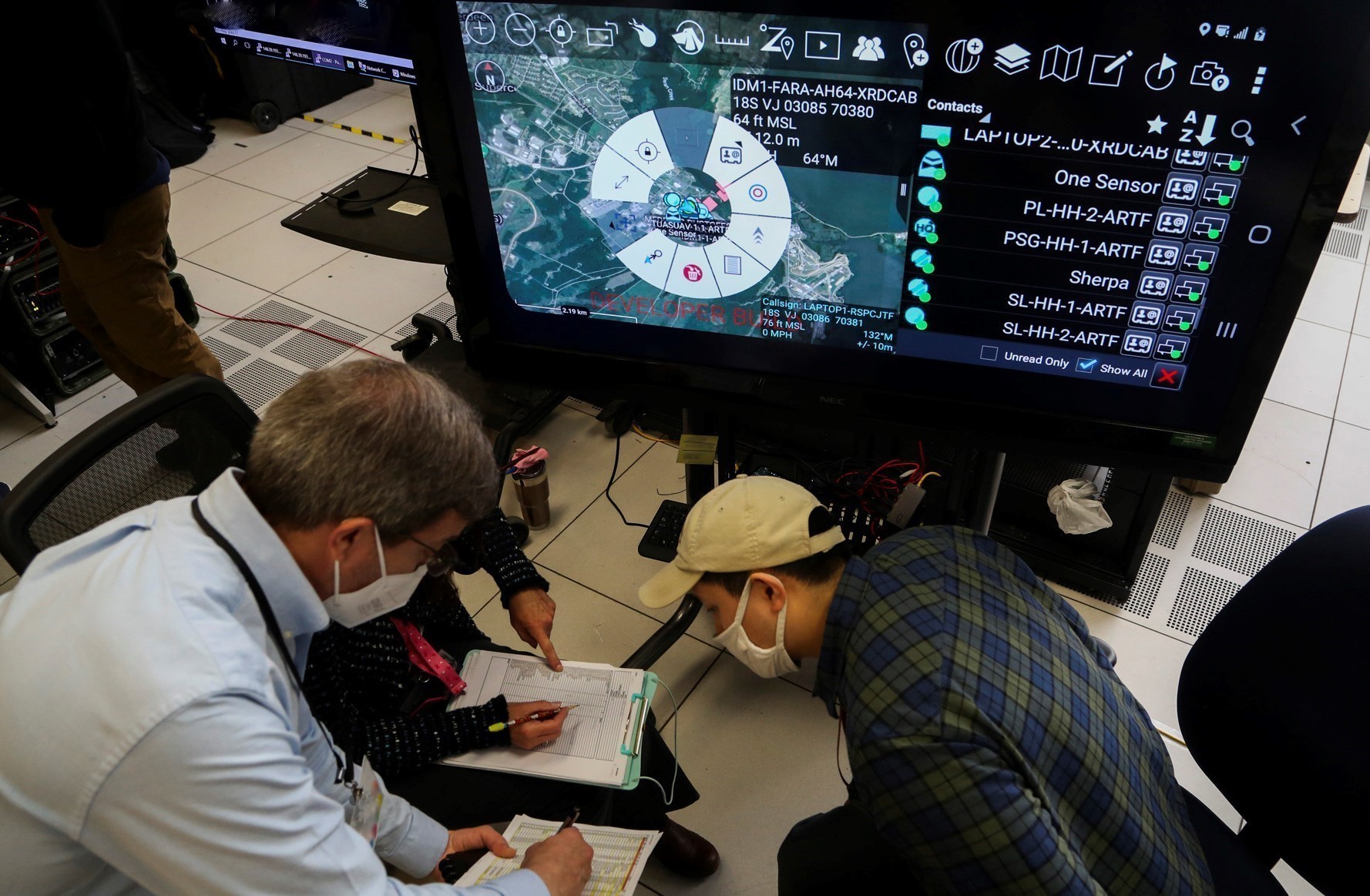
The Army’s Joint Systems Integration Laboratory hosted its second communications exercise (COMMEX 2) at Aberdeen Proving Ground April 5-16. (DVIDS)
A chorus of military leaders and strategists will say that preparing for a future conflict means preparing the digital ground. Ret. Gen. Richard Cody recently attended a joint exercise designed to explore just how to do that. In the op-ed below he describes what he saw when the Army brought its Project Convergence to Aberdeen Proving Ground and why he believes investments in projects like it are already showing their value.
In this hyper-competitive world, the days of it being enough to fight jointly with weapons sequenced across time and space are quickly coming to an end. They’re replaced by the need for simultaneity throughout air, land, sea, cyberspace and space domains. Today, services are looking earlier in the capability development process and leveraging joint experimentation to ensure future systems and weapons meet that need. They’re looking at initiatives like Project Convergence.
The Army’s Project Convergence ’21 Communications Exercise that I recently attended at the Joint Systems Integration Laboratory at Aberdeen Proving Ground, Md. is an incredible example of this innovative approach. Warfighters, software developers, and engineers from the Army, Air Force, Navy and Marines executed multiple sensor-to-shooter scenarios for achieving Combined Joint All Domain Command and Control, known as CJADC2. The stress-testing of tactical ground force systems integrating into joint operational architectures is part of the larger all-domain experimentation commitment made by the services.
In the lab in Maryland, the Army linked up Marines, Special Operators, the Navy, and representatives from around the defense science and technology enterprise to view the art of the possible regarding digital connectivity and the use of artificial intelligence in tactical fires. Although the cold precision of a computer laboratory is not a replacement for the fog and friction of the modern battlefield, the integration laboratory is the first step in seeing what can really be achieved regarding joint connectivity and inter-dependence of tactical fires.
A key aspect of this all-domain approach is recognition that there are no silver bullets when it comes to systems or solutions to achieving CJADC2. Each service domain brings unique capabilities with evolving requirements that must be continuously adapted as technologies and threats change. For the Army, this could mean drastically increased data exchange requirements through the cyber and space domains from tens of thousands — or hundreds of thousands — networked soldiers.
As a result, when it comes to the implementation of joint all-domain operations, a single network architecture becomes unfeasible from both a defensive and offensive standpoint. Instead, services’ operational architectures need to be resiliently layered with common data exchange standards. Artificial intelligence could then be optimized for the information advantage and rapid decision-making required to generate multiple dilemmas on a near peer competitor.
From my cockpit this type of digital rehearsal is just as key as a weapons check on our future battlefields. Data is the new ammunition, and we have to test fire our digital systems just like we test fire our weapons systems. But what I saw at Aberdeen, Maryland was more than a test fire, the young men and women of our services, both uniformed and civilian, were attempting to stress our systems, connecting in ways that no one had previously thought, and working to improve the capacity and inter-operability and speed of our tactical networks.
This kind of work doesn’t just happen on paper with diagrams. It happens through experimentation – and yes, that means failures will happen — in the Joint Systems Integration Laboratory, coupled with in-the-field tests of developed solutions. It’s using actual systems with actual joint warfighters. Experiments like Project Convergence ’21, occurring in November at Yuma Proving Ground and White Sands Missile Range, are not only essential but necessary for informing smart investment decisions at the programmatic level.
The digits were flying between the Navy, Army, Marines, and the Special Operators in the laboratory, but it’s better for the digits to move (or not move) in the lab rather than on the battlefield. Our investment in the systems laboratory continues to prove its worth, allowing the team to leverage this final conditions check before we get everything out in the dirt and continue with our Army’s campaign of learning.
The transformative shift in the National Defense Strategy to great power competition increases the urgency for joint all domain operations in defeating threats, below the level of armed conflict. Our shared responsibility and collective energy have already created remarkable progress and momentum, as demonstrated by Project Convergence and other Army Joint All Domains initiatives. Together, we must stay “all in” on a common framework for developing all-domain compatible capabilities sooner with a shared goal of prevailing against adversaries today and into the future.
Richard Cody served as the 31st Army vice Chief of Staff. Prior to that Cody served in six of the Army’s combat divisions and held several key staff positions, including commander of the 160th Special Operations Regiment — the famed Night Stalkers –and as commanding general of the 101st Airborne Division.






















